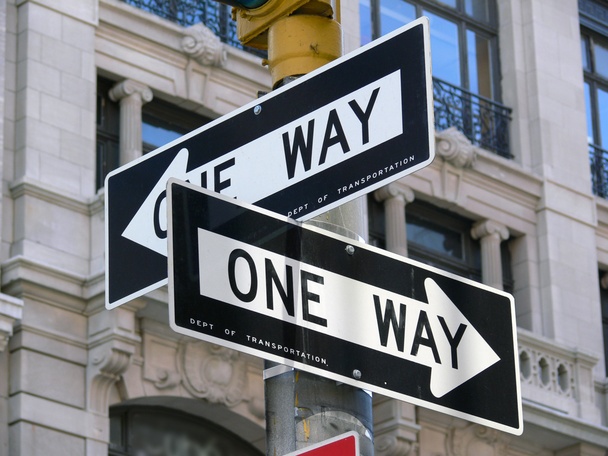Device name(s): One Way Streets
Approximate Cost:
Definition: One-way street operation can be used to partially restrict vehicle access and lower traffic volume to control traffic movement movement within a neighborhood, or to break up cut through routes. They are clearly marked with signs to indicate the direction of travel. They may be used in pairs, with traffic flowing in one direction on one street, in the opposite direction on the other.The penalties associated with violating one-way street restrictions may help ensure drivers compliance with them,but one-way streets can sometimes result in increased speed and traffic violation rates. One-way streets change the operations of a roadway by restricting its flow.
Fast Facts:
- Can be used on Local Street- yes
- Can be used on Collector- no
- Can be used on Arterial- no
- Reduces Speed- no
- Reduces Volume- possible
- Noise Impact- no
- Restricts Access- yes
- Bicyclist Impact- now
- Transit Impact- possible
- Parking Impact- no
- Emergency Response Impact- possible
Advantages:
- appropriate when some condition unique to a street make it attractive to traffic flowing in one direction
- may increase on street parking area
- can be used as a safety measure
- street tends to be safer because there is no friction from opposing traffic
- increases pedestrian safety
Disadvantages:
- may inconvenience residents in gaining access to their properties
- may move traffic to other neighborhood streets
- may result in increased speeds, especially if streets is wide
- increases response time for emergency vehicles
- can lead to increased vehicle speeds
Criteria/Application(s):
- requires collaboration of other traffic measures
- needs to be paired with other one-way streets
